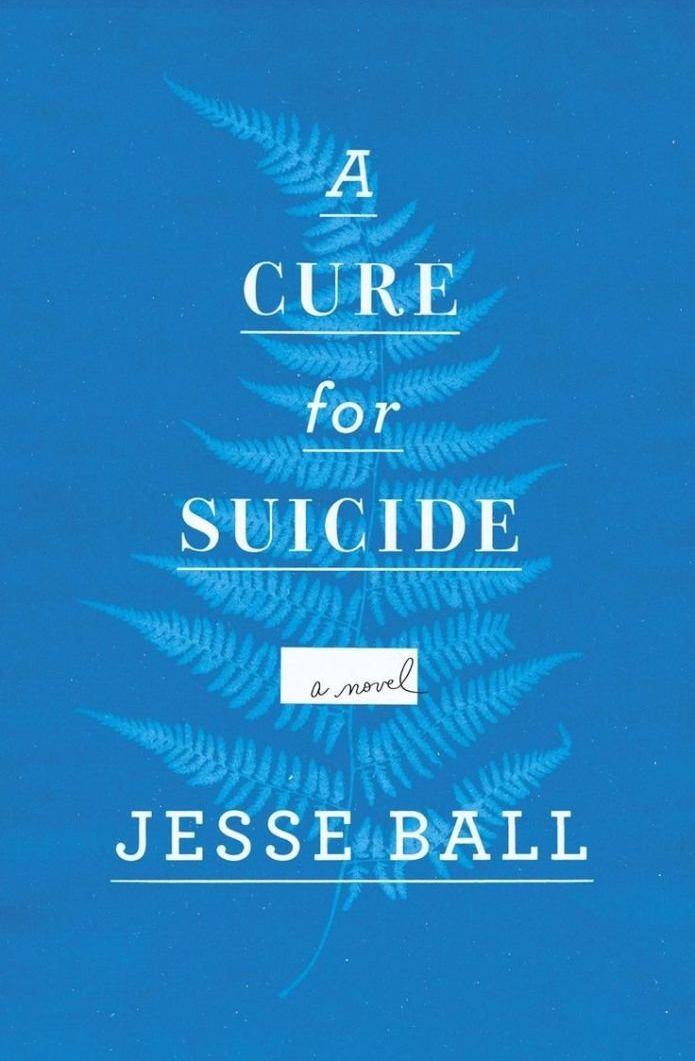Most infants speak their first words when they’re about a year old. The slow crawl from babbling to the ability to hold a conversation has myriad obstacles. For example, kids have a hard time grasping the concept of words representing objects, even if those objects aren’t readily available. These hiccups are to be expected; they’re a natural part of growing up, and preparing to socialize with others. But imagine learning the basic hurdles of language development as an adult -- in middle age, shrouded by confusion and an understanding that your capacities aren’t up to snuff.
This is the premise for the first scene of Jesse Ball’s abstract dystopian novel, A Cure for Suicide. A man, dubbed the claimant, is relearning how to speak. A woman, who refers to herself as the examiner, is teaching him, but the reasons for his social shortcomings are unclear. They interact formally; their bristly tone makes it clear that something's amiss, but Ball never fully explains what. “This is a chair,” the examiner says. “A person is made in such a way that he can sit where he likes. He can sit on the ground ... or even on the table itself ... However, if you are in company, it is best to sit in a chair unless there is good reason to sit elsewhere.”
The examiner goes on to teach the claimant about other general aspects of human culture -- the merits of painting versus photography, the importance of being guided by reason, the justifications for why someone might say something that isn’t true. She tells him why he’s alone in her presence -- he "was sick and almost died" -- and explains to him the Process of Villages, a sort of recovery process meant to help those who seek assistance in forgetting painful events and starting their lives anew.
She explains that if he learns how to interact well with others, he’ll be able to secure a job and a partner, establishing a sturdy life within a designated village. But, should he fail to act in accordance with her expectations, he'll be transported to a new village, given a new name, and forced to reset his learning process once again.
While some expectations are made clear -- the claimant is to stay within his given house unless given permission otherwise -- others are hazy. The claimant unknowingly falters when he begins writing about memories from his past life in his diary. The examiner reads his jottings and hesitatingly decides to reset his memory.
Though the reader is mostly immersed in the psyches of the claimant and the tight-lipped examiner, the few glimpses we’re given behind the scenes are ominous. Did the claimant submit to resetting his memory, and if so, why? Is the Process of Villages an effective means of coping with grief, or does it merely numb its participants’ minds?
Ball provides more questions than answers, but manages to craft a full, satiating story nonetheless. Midway through the novel, he switches gears, and abandons the sparse dialogue between the examiner and the claimant to reveal a rich, tragic love story from the claimant’s life before his memories were cleansed. The heart of the claimant’s motivations -- a dense kernel buried and reshaped by the Process of the Villages -- is revealed, richly adorned with sensuous scenes.
Ball's ability to tell a gripping, plot-driven story that implies an underlying philosophy was demonstrated in his previous novel, Silence Once Begun, a thriller pieced together with evidence surrounding a murder, and a suspect who’s vowed never to speak again. As with Silence, the reader is allowed to roam around in the gaps of A Cure for Suicide, drawing her own conclusions, and imbuing the plot with her own feelings and memories.
But, in imbedding a detailed love story within his wide-open scenes, Ball is commenting on the texture of our strongest memories -- jagged rocks that jut out amid the steady tide of daily life.
Warm feelings of nostalgia can be cozy and evocative; dark feelings of regret can be rough and jarring. Ultimately, our minds find a way to cope with the latter, and that coping can involve a dulling, a polishing, of our feelings. Is this process an unfortunate loss, or simply part of growing up? Ball’s airy prose leaves the question unanswered, and lets readers explore his unique dystopian world while they decide for themselves.
The Bottom Line
Ball’s novel is an enthralling thought experiment that considers the value of memory versus the pain of grief. Fans of dystopian stories and themes involving memory will relish this magical novel.
Who wrote it?
Jesse Ball is a poet and fiction writer. His previous novel, Silence Once Begun, was a finalist for the Los Angeles Times Book Prize.
Who will read it?
Those interested in philosophical sci-fi a la Kazuo Ishiguro.
Opening Lines:
"The examiner closed the gate behind her with a swift, careful motion. She listened to it shut, and then proceeded."
Jesse Ball
July 21, 2015
Pantheon, $24.00
